Featured in the Community Foundation's Webinar, Navigating the New Landscape: What the "One Big Beautiful Bill Act" Means for Philanthropy and Planning
As the dust settles on the latest tax legislation, financial advisors and donors alike are beginning to unpack its implications. Devin Johnson, CPA, CFP® a seasoned tax strategist, recently shed light on how the bill reshapes charitable giving and tax planning for millions of Americans.
Clarity Brings Complexity
After years of speculation surrounding the sunset of the Tax Cuts and Jobs Act (TCJA), the new bill offers clarity—but with added complexity. With permanent changes to standard deductions and tax rates, donors now face a more nuanced landscape for charitable contributions.
Empowering Non-Itemizers
One of the bill’s most impactful provisions is the charitable deduction for non-itemizers. Starting in 2026, single filers can deduct up to $1,000 and joint filers up to $2,000 in cash donations—even if they don’t itemize. This move revives a concept briefly seen during the CARES Act and aims to boost giving among lower and middle-income households.
A New Floor for Itemized Deductions
For those who do itemize, a new hurdle emerges: Donations must exceed 0.5% of adjusted gross income (AGI) to qualify for deductions. Corporations face a 1% floor. This change introduces a layer of complexity, with carryover rules and deduction ordering requiring careful planning.
High-Income Filers Face Caps
Starting in 2026, itemized deductions for top earners will be capped at a 35% tax benefit, down from 37%. This subtle shift could significantly impact philanthropic strategies, prompting many to consider accelerating donations before the cap takes effect.
Incentives for School Voucher Donations
In a first-of-its-kind move, the bill introduces a federal tax credit for donations to certified state scholarship granting organizations. Beginning in 2027, donors can receive a 100% credit up to $1,700 (reduced by any state credit), offering a compelling incentive for educational philanthropy.
Estate Planning Reimagined
The bill also permanently increases the estate tax exemption to $15 million in 2026, alleviating pressure on high-net-worth individuals to rush estate updates. With this change, the focus shifts from urgency to income tax efficiency and strategic wealth transfer.
Planning Ahead
Johnson underscores the importance of proactive planning. With more time than the rushed TCJA rollout, individuals and advisors can explore strategies—both new and familiar—to optimize giving and minimize tax burdens.
“Ask your CPA. Ask your advisor. Everyone’s situation is unique,” Johnson advises. “And if you don’t have one, now’s a great time to start that conversation.”
 Guest Author,
Guest Author,
Devin Johnson, CPA, CFP®, Financial Planner, Mason Investment Advisory Services, Inc.
WEBINAR AVAILABLE: Navigating the New Landscape, What the "One Big Beautiful Bill Act" Means for Philanthropy and Planning
The Community Foundation for Northern Virginia hosted a session exploring how recent federal policy changes—highlighted in the “One Big Beautiful Bill Act”—may impact charitable giving and estate planning. The session featured policy expert Jeff Hamond and financial professionals Devin Johnson (Mason Investment Advisory Services) and James Head (BDO). Our presenters offer both high-level insights and practical strategies for donors and advisors.
Watch the Webinar
The Community Foundation team is happy to help you structure charitable giving tools and plans to achieve your clients’ philanthropic goals—whether through beneficiary designations or any other type of charitable giving vehicle. This email address is being protected from spambots. You need JavaScript enabled to view it.!
The information contained in this article is provided for informational purposes only. It is not intended as legal, accounting, or financial planning advice.


 Questions?
Questions? Questions?
Questions?



